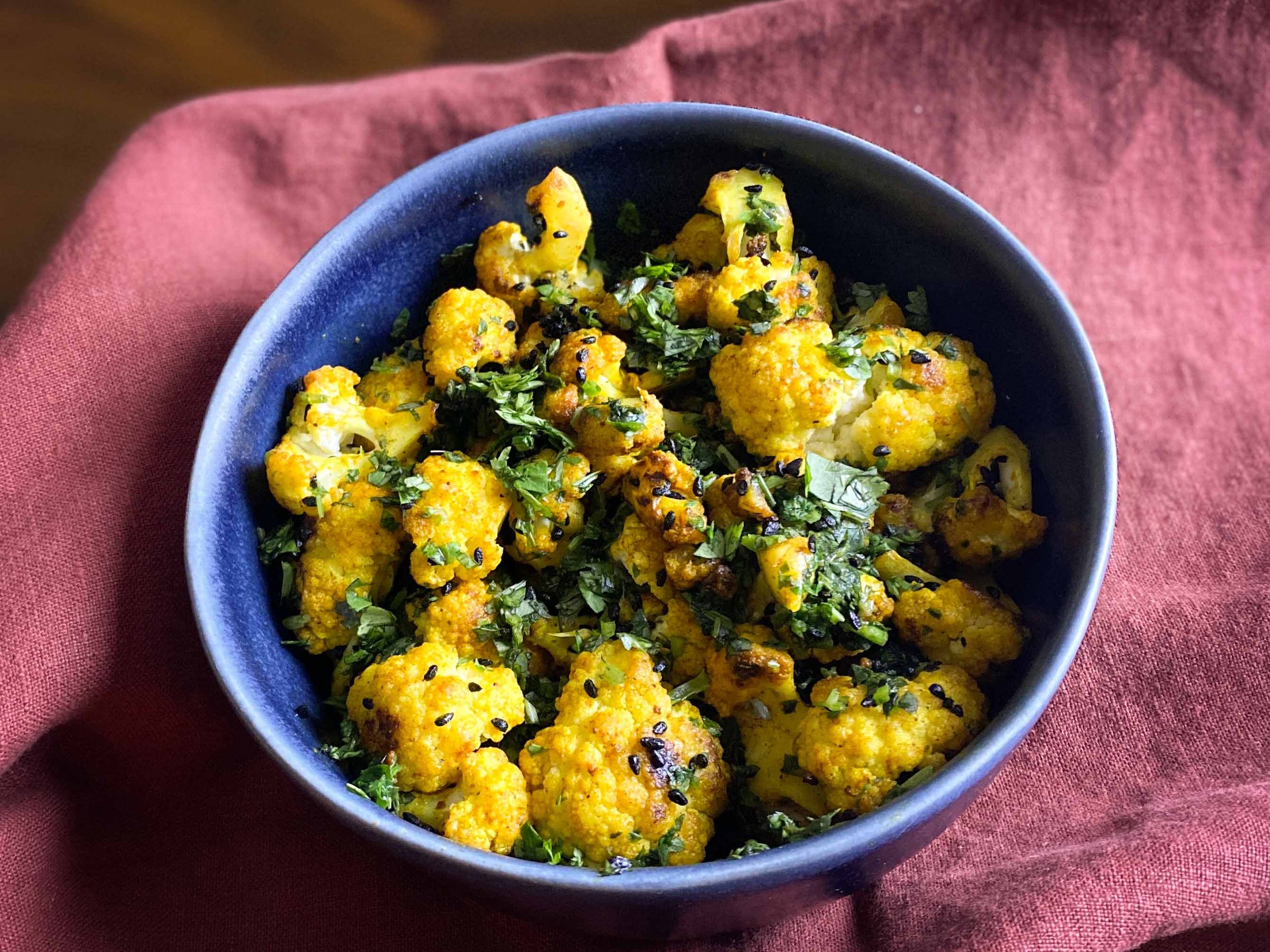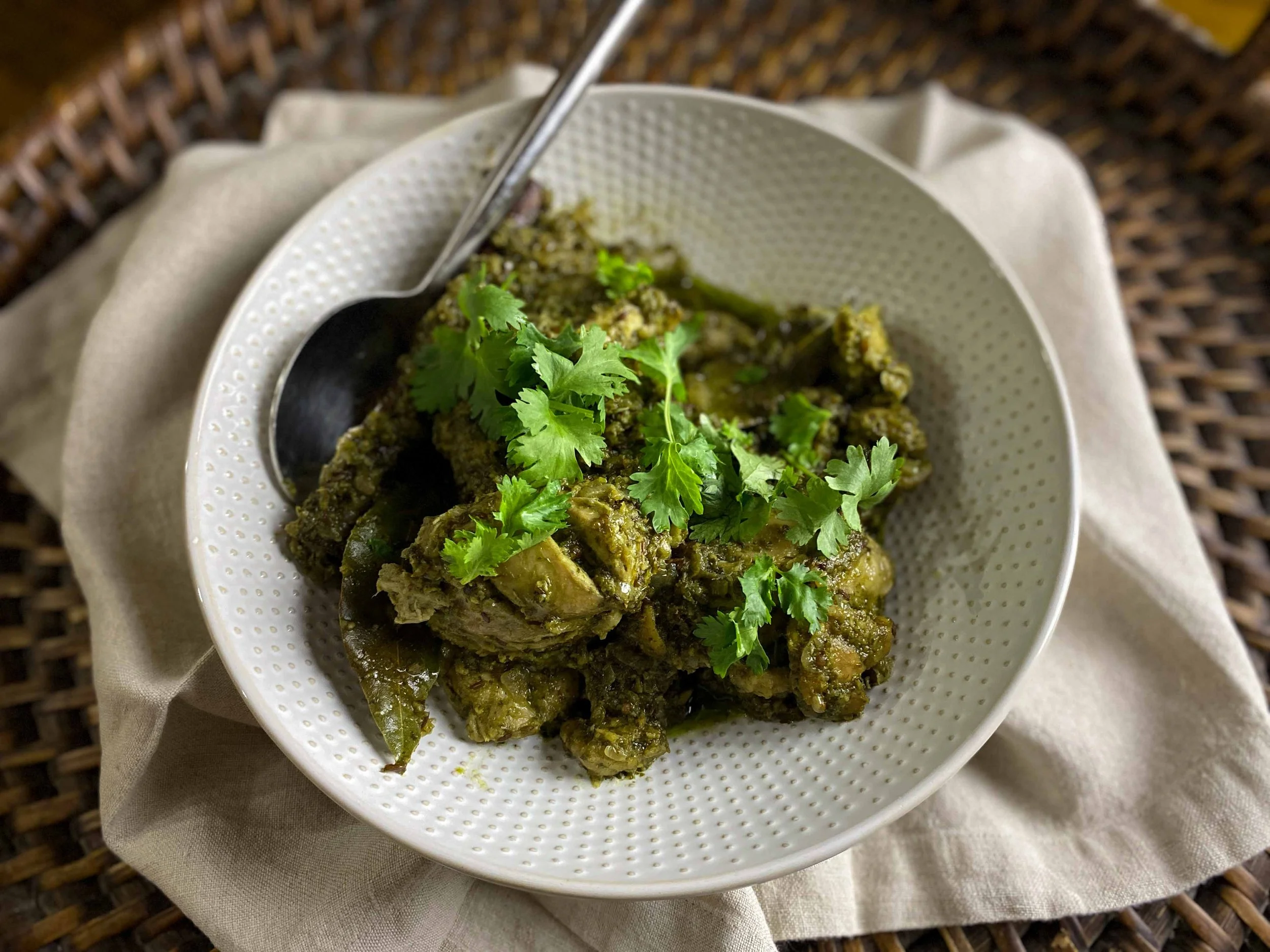By Leslie Brenner
Kolkata: Recipes from the Heart of Bengal, by Rinku Dutt, photographs by Steven Joyce; 2022, Smith Street Books, $35.
We’ve fallen in love with ‘Kolkata’ — the debut cookbook from London food-truck proprietor Rinku Dutt — set to be published this week, on Tuesday, October 18.
Backgrounder
Author Dutt was born and raised in London, but her family is from Kolkata (the Indian city that was known under colonial rule as Calcutta), and has always maintained close ties. In the heart of West Bengal, Kolkata is considered the cultural capital of the country; it’s nicknamed “The City of Joy.” It was there that her great-grandfather founded a restaurant, Central Hotel, whose named changed after Independence to Amber. (It’s still open!) Dutt began her career in banking, and was also a classical Indian dancer. She later spent three years living in Kolkata, working in the fashion industry, diving deep into the food culture and falling even more in love with the city than she already was.
Returning to London in 2014, she founded the Bengali food truck and pop-up restaurant Raastawala with her father and brother, and contributed Indian recipes to several of the Leon cookbooks.
Why We Love ‘Kolkata’
Dutt paints a captivating picture of the city and its culture (aided by Steven Joyce’s evocative photographs), offering such a strong sense of it that invokes a sudden longing to get there. “The architecture may be damp and deteriorating,” she writes, “but it is all so vibrant with colour. The bells ringing in the temples, incense sticks burning, smelling the aromas of food being cooked in the houses as you walk by, the balconies, the crumbling paint, the rickshaws, autos and yellow taxis . . .”
Happily for those who mean to get there, Dutt provides (buried near the end of the book) a compelling list of restaurants to visit.
Meanwhile, Dutt does a wonderful job explaining how people within the culture eat — something that too few cookbooks achieve:
“Unlike many cuisines where a meal may be comprised of one or a few courses, in Bengali cuisine, all (and often that means many) dishes are served together, but their are eaten in very specific combinations, one after the other. A classic order (and one that we use at our family table when entertaining and when in Kolkata) starts the meal with rice, followed by a bitter (shukto or shaak) palate cleanser, then a dal (a lentil dish) with a bhaja (battered fried vegetables), then a vegetable dish, a fish dish and next a meat dish, with a chutney and a salad on the side.”
She adds that an everyday meal in most Bengali households consists of “rice, dal, a vegetable and either a meat or fish dish.” That’s a useful blueprint for how to use the book — for weeknight dinners, or for more elaborate entertaining.
Masoor Dal (Red Lentil Dal) from ‘Kolkata’
Dutt’s recipes, many gleaned from her grandmother and other family, are wonderful — particularly in the way they layer spices — and they’re simple enough to be do-able for home cooks. Many are prepared using a karai (or kadhai, an Indian pan with steep, sloped sides) or a wok. We tested them using a wok; a deep skillet with sloped sides would work just as well for those we tested.
A Delicious Place to Start
Kolkata is on the Hooghly River, just inland from the Bay of Bengal, and Dutt describes a food culture that reveres seafood, so we dove in with Shrimp with Poppy Seeds — Chingri Posto. A dish the author learned from her mother, who had fond memories of her own mother making it, it’s easy, memorable and delicious.
This Cauliflower Dry-Fry — Phulkopi Bhaja — is also excellent, and easily achieved, cloaked with nigella seeds, turmeric, a bit of dried red chile and chopped cilantro. Our only complaint was there was too little of it; we doubled Dutt’s ingredients in our adaptation to make enough to serve 4 to 6. (It seems more worth the effort to make a whole cauliflower head’s worth; if there are leftovers, they’re still delicious.)
RECIPE: ‘Kolkata’ Cauliflower Dry-Fry (Phulkopi Bhaja)
And here’s a heart-warming Red-Lentil Dal (Masoor Dal, shown abobve) we’ll be making on a regular basis.
RECIPE: Red Lentil Dal (Masoor Dal)
You’ve Gotta Try This
This sumptuous dish gets a one-two-coriander punch, as chicken thighs are marinated in a thick paste involving lots of fresh cilantro (coriander) leaves and stems, and then ground coriander seeds are added as the dish cooks. Cumin, cloves, cinnamon, peppercorns and chiles add layered complexity. Once marinated (ideally overnight), it’s a snap to pull together.
RECIPE: Rinku Dutt’s Coriander Chicken
Still Wanna Make
So many things! I’ll want to concoct some Tomato and Prune Chutney to go with the Coriander Chicken next time I make that. There’s a “Rich and Thick” Lamb Curry (Kosha Mansho), “served up at most weddings and family gatherings” — high on the list. Lentil Cakes in Gravy looks magnificent, as do Onion Fritters (Piyaji). Eggplant and Spinach Dry-Fry will likely be on our table soon; ditto Ron’s Chicken Biryani (the author’s dad’s recipe). In the seafood department, Jumbo Shrimp in a Thick Coconut Gravy looks incredible, and so does Banana-Leaf Steamed Mustard Fish.
Speaking of which, considering that Kolkata is such a seafood town, I do wish there were more seafood recipes. Several of them call for salmon or tuna, as cooks outside of Bengal wouldn’t have access to the fishes used there; I found myself wishing Dutt stretched a bit to suggest less-Western solutions.
One more wish — in case the author has a second book in mind (which I hope she does!): a bit more help with ingredients, techniques and equipment. I know readers often skip over such “basics” chapters, but I felt this book could have used a brief one, answering questions like what’s the difference between white and black (aka blue) poppy seeds, something about various lentils, whether it’s worth buying karai if you don’t already own one, what type of potatoes are favored for these dishes, a bit about the dry-frying technique used a number of times, and so forth.
That’s small stuff, though. This debut cookbook is one we highly recommend. Grab a couple: one for yourself, and one for an Indian-food-loving friend. And it’s so pretty, it’ll make a fine holiday gift.





